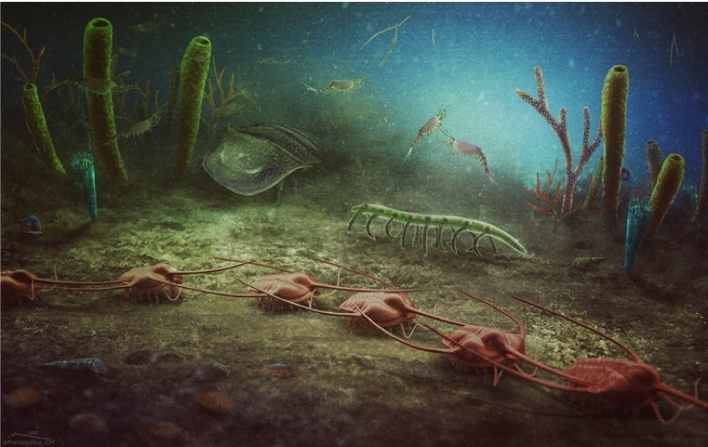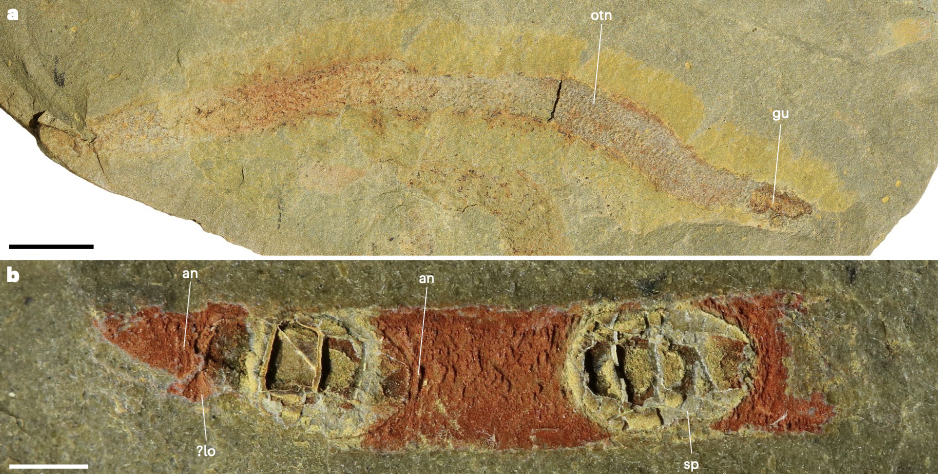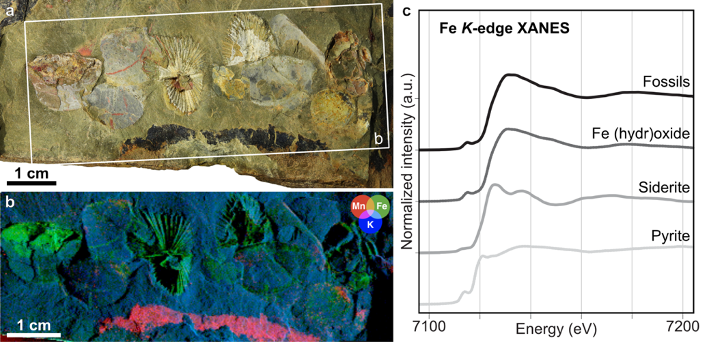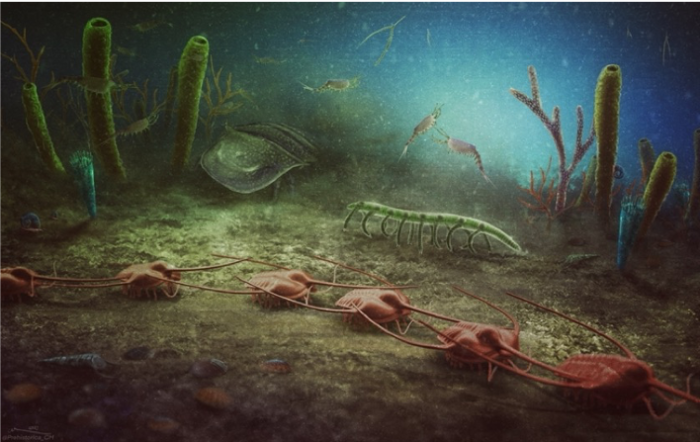Today our international team led by Farid Saleh of the University of Lausanne and Bertrand Lefebvre of the Lyon University introduces a new fossil site that has been uncovered in the French department of Hérault through the perseverance of two ardent amateur palaeontologists, Sylvie and Éric Monceret. The 470-million-year-old fossils, over 400 in number, unearthed by the couple at the so-called Cabrières site, near Pézenas, are presented in an article published in Nature Ecology & Evolution.

This site is particularly important because it opens a unique snapshot on ecosystems that were located the closest the Ordovician south pole hitherto discovered. Among the most bountiful and diverse fossil beds from that geologic period, the Cabrières site stands out for its remarkable degree of preservation, which enabled the rare discovery of soft-bodied organisms such as worms, a wide variety of algae and sponges, contributing to a better understanding of the pivotal role these highly decay-prone organisms played in ancient ecosystems.

Our findings challenge previous thinking that posited a decrease in biodiversity or even an extinction between the Cambrian and Ordovician Periods, approximately 485 million years ago. The high level of biodiversity observed does, however, confirm the hypothesis of species’ migration toward the Ordovician southern hemisphere, seeking refuge from the excessive temperatures of the tropical zones.
My contribution to this work involved the examination, identification, and imaging of many specimens, with a particular focus on the arthropods. I also conducted a first investigation of the preservation of the fossils using X-ray fluorescence major-to-trace elemental mapping and X-ray absorption spectroscopy at the PUMA beamline of SOLEIL synchrotron on a couple specimens. Based on the collected data and complementary laboratory analyses we established that the fossils are essentially made up of a layer of Fe(III) oxide/hydroxide crystals, varying in thickness and containing traces of metals. The distribution of other elements, notably manganese and arsenic, strongly suggests that iron oxide (hydr)oxides do not represent the original mode of preservation of these fossils, but rather result from more recent alteration processes, as demonstrated for other contemporary deposits. This highlights the biases that have affected the completeness of the newly discovered ecosystem, and enables finer comparisons with other fossil sites.

This initial study of the site inaugurates a research program that is to span several years and include large-scale excavations followed by in-depth analyses of fossils, using innovative imaging techniques. The aim is to detail the fossilized organisms’ internal and external anatomies, taxonomic relationships, and modes of life.
Reference: Saleh F., Lustri L., Gueriau P., Potin G.J.-M., Pérez-Peris F., Laibl L., Jamart V., Vite A., Antcliffe J.B., Daley A.C., Nohejlová M., Dupichaud C., Schöder S., Bérard E., Lynch S., Drage H.B., Vaucher R., Vidal M., Monceret E., Monceret S. & Lefebvre B. 2024. The Cabrières Biota (France) provides insights into Ordovician polar ecosystems. Nature Ecology and Evolution 8, 651–662. Find the article (Open Access) here
